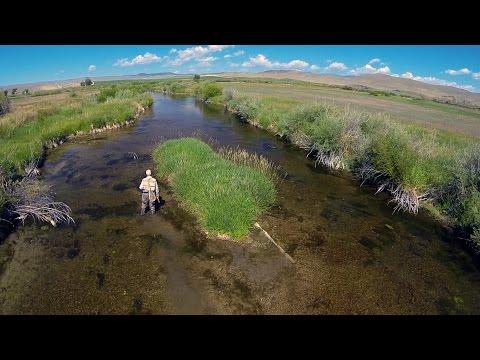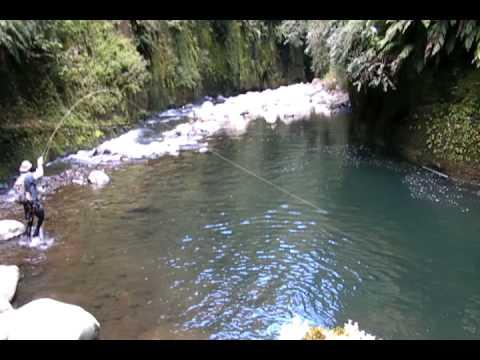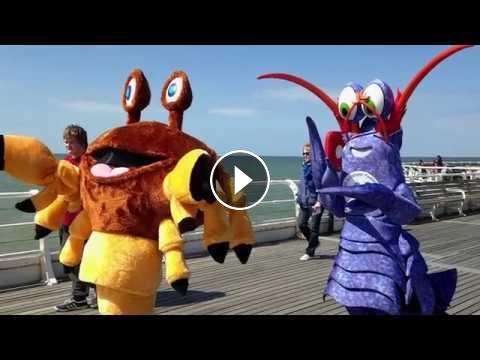A day trip to Cromer - the famous Pier, fish and chips, steep cliffs, lots of gulls, a fabulous beach, crashing waves and a tall church on the north Norfolk coast!
Film by Deanna Allison.
Narrative text extract:
Cromer is a town on the north coast of the English county of Norfolk.
Tourism developed here during Victorian times and is now an important part of the local economy.
Cromer Pier is a well-known landmark here.
For a period of time Cromer was without a pier but in 1901 the new pier was completed and opened to the public.
The new pier was 140 meters long.
Originally the end of the pier was occupied by a bandstand.
The end of the pier now houses the Pavilion Theatre and a Lifeboat Station has been added.
Cromer pier is home to the last end-of-pier show in Europe.
The pier and the town were used as a location for the 2013 film Alan Partridge: Alpha Papa.
Traditionally Cromer was a fishing town and about ten boats ply their trade from the foot of the gangway on the east beach.
Cromer crabs are famous and each May the Cromer and Sheringham Crab and Lobster Festival promotes the local fishing community.
If you fancy a tasty seaside treat, Cromer has some excellent fish and chips restaurants that are well worth visiting.
If the sea air has given you an appetite, you could also head for one
of the pubs or cafés close to the seafront.
In the 18th century, Cromer was little more than a small village gathered around a large, poorly maintained church.
Today, most of the older buildings in Cromer date from the late 18th century up to the early 20th century, a period of significant growth for the town.
This growth was stimulated by the late Georgian belief in the medicinal benefits of sea-bathing and later by the arrival of the railway in 1877.
The Church of St Peter and St Paul dates from the 14th century and dominates the town.
The Bell tower is the highest in the county.
It is constructed mainly of knapped flint and the top of its pinnacles are almost 49 meters above the ground.
The grounds of the church also contain Cromer’s war memorial.
Since the church was restored in the Victorian era, much of what you can see in the building is 19th century.
There is a great, lofty nave which is filled with light from vast windows.
The shortened chancel makes the stained glass of the east window rather imposing.
There used to be another church in Shipden, north of Cromer.
It was lost to the sea by about 1400 and now lies about 500 metres beyond the end of the pier.
The cliffs around Cromer are soft and erode quickly, especially during storms.
Rock falls are common along this coast and make the cliff edge dangerous.
You may also see the remains of buildings in the sand.
This World War 2 defensive ‘pillbox’ was once set on a shelf near the base of the cliffs.
Cromer beach hosts rows of iconic coloured beach huts which are available to rent annually or buy from the local council.
Many of these were damaged or destroyed in the storms of 2013 and 2017.
The pier was also damaged during storm surges in 2013 and 2017 and was successfully repaired.
The storm of December 2013 caused considerable damage, closing the pier and the theatre.
However, the iron structure supporting the pier is strong.
At low tide the gently corroding iron structure reveals itself and it is possible to explore the intricate maze of struts, supports and girders.
In the 1920s a lifeboat station was built at the end of the pier, enabling a motor lifeboat to be launched beyond the breakers.
Today the offshore lifeboat on the pier performs about a dozen rescues a year, with about the same number for the inshore lifeboat stationed on the beach.
Flags of the Royal National Lifeboat Institution fly proudly here.
and The Henry Blogg Museum celebrates the most decorated lifeboatman in RNLI history.
There are a lot of wooden groynes here, sticking into the sea at right angles to the shore.
They form a physical barrier to stop the sand being washed away.
Groynes are generally placed in groups. They are often used in tandem with seawalls.
You can also see wooden revetments along the shore to the west of Cromer.
These reduce erosion by disrupting the force of the waves crashing against the shore.
As the tide recedes, these structures are uncovered along with the marine life that makes its home on them.
In fact, metal rusts more quickly here at the seaside
and this boat-pulling tractor parked on the beach has suffered serious corrosion from the salt water in the air despite its protective paintwork.
You’ll see a lot of birds on a trip to Cromer and the black-headed gull is a common sight.
In fact, for much of the year, including winter, these gulls have a white head with dark markings.
They can be seen year-round and like to eat insects, fish and carrion.
There are over 2 million of these birds in the UK - so even if you visit Cromer in the winter you won’t be on your own!
Film by Deanna Allison.
Narrative text extract:
Cromer is a town on the north coast of the English county of Norfolk.
Tourism developed here during Victorian times and is now an important part of the local economy.
Cromer Pier is a well-known landmark here.
For a period of time Cromer was without a pier but in 1901 the new pier was completed and opened to the public.
The new pier was 140 meters long.
Originally the end of the pier was occupied by a bandstand.
The end of the pier now houses the Pavilion Theatre and a Lifeboat Station has been added.
Cromer pier is home to the last end-of-pier show in Europe.
The pier and the town were used as a location for the 2013 film Alan Partridge: Alpha Papa.
Traditionally Cromer was a fishing town and about ten boats ply their trade from the foot of the gangway on the east beach.
Cromer crabs are famous and each May the Cromer and Sheringham Crab and Lobster Festival promotes the local fishing community.
If you fancy a tasty seaside treat, Cromer has some excellent fish and chips restaurants that are well worth visiting.
If the sea air has given you an appetite, you could also head for one
of the pubs or cafés close to the seafront.
In the 18th century, Cromer was little more than a small village gathered around a large, poorly maintained church.
Today, most of the older buildings in Cromer date from the late 18th century up to the early 20th century, a period of significant growth for the town.
This growth was stimulated by the late Georgian belief in the medicinal benefits of sea-bathing and later by the arrival of the railway in 1877.
The Church of St Peter and St Paul dates from the 14th century and dominates the town.
The Bell tower is the highest in the county.
It is constructed mainly of knapped flint and the top of its pinnacles are almost 49 meters above the ground.
The grounds of the church also contain Cromer’s war memorial.
Since the church was restored in the Victorian era, much of what you can see in the building is 19th century.
There is a great, lofty nave which is filled with light from vast windows.
The shortened chancel makes the stained glass of the east window rather imposing.
There used to be another church in Shipden, north of Cromer.
It was lost to the sea by about 1400 and now lies about 500 metres beyond the end of the pier.
The cliffs around Cromer are soft and erode quickly, especially during storms.
Rock falls are common along this coast and make the cliff edge dangerous.
You may also see the remains of buildings in the sand.
This World War 2 defensive ‘pillbox’ was once set on a shelf near the base of the cliffs.
Cromer beach hosts rows of iconic coloured beach huts which are available to rent annually or buy from the local council.
Many of these were damaged or destroyed in the storms of 2013 and 2017.
The pier was also damaged during storm surges in 2013 and 2017 and was successfully repaired.
The storm of December 2013 caused considerable damage, closing the pier and the theatre.
However, the iron structure supporting the pier is strong.
At low tide the gently corroding iron structure reveals itself and it is possible to explore the intricate maze of struts, supports and girders.
In the 1920s a lifeboat station was built at the end of the pier, enabling a motor lifeboat to be launched beyond the breakers.
Today the offshore lifeboat on the pier performs about a dozen rescues a year, with about the same number for the inshore lifeboat stationed on the beach.
Flags of the Royal National Lifeboat Institution fly proudly here.
and The Henry Blogg Museum celebrates the most decorated lifeboatman in RNLI history.
There are a lot of wooden groynes here, sticking into the sea at right angles to the shore.
They form a physical barrier to stop the sand being washed away.
Groynes are generally placed in groups. They are often used in tandem with seawalls.
You can also see wooden revetments along the shore to the west of Cromer.
These reduce erosion by disrupting the force of the waves crashing against the shore.
As the tide recedes, these structures are uncovered along with the marine life that makes its home on them.
In fact, metal rusts more quickly here at the seaside
and this boat-pulling tractor parked on the beach has suffered serious corrosion from the salt water in the air despite its protective paintwork.
You’ll see a lot of birds on a trip to Cromer and the black-headed gull is a common sight.
In fact, for much of the year, including winter, these gulls have a white head with dark markings.
They can be seen year-round and like to eat insects, fish and carrion.
There are over 2 million of these birds in the UK - so even if you visit Cromer in the winter you won’t be on your own!
- Category
- Fly Fishing




